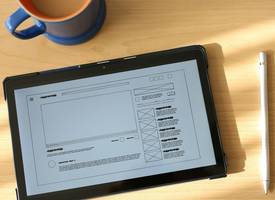Accessible Placeholder Images: Best Practices for Inclusive Design
Accessible placeholder images are essential for building modern, inclusive websites. By following accessibility best practices—like using high-contrast colors, descriptive alt text, and ARIA attributes—you ensure that everyone, including users with visual impairments or using assistive technology, can understand your content. This guide covers actionable strategies, tested API examples, and a practical checklist for making every placeholder image accessible, readable, and compliant.

Why Accessibility Matters for Placeholder Images
Accessible placeholder images benefit everyone—users with low vision, color blindness, or those using screen readers. They support web accessibility standards (like WCAG 2.1), improve SEO, and help avoid legal risks. Whether your site is used by designers, developers, or the general public, making images accessible means your content reaches the widest audience. Real-world scenarios include visually impaired users navigating with a screen reader, or ensuring text on images remains readable even in bright sunlight.
High-Contrast Options for Accessible Placeholder Images
High-contrast placeholder images make text and visuals readable for everyone, including users with color vision deficiencies. To meet accessibility standards, use color combinations with a contrast ratio of at least 4.5:1 (WCAG 2.1 AA). Avoid using similar hues for background and text—for example, pair dark blue backgrounds with white or yellow text. Learn more about color accessibility in our color features page.

ARIA and Alt Text for Placeholder Images
Alt text (alt attribute) provides a description of an image for those using screen readers or when the image cannot load. For placeholder images, make the alt text meaningful—describe the intended content or function, not just "placeholder". ARIA attributes, like aria-label, offer additional context for assistive technologies. Combined, these approaches help make images truly accessible and improve the user experience for everyone.
<img src="/v1/600x300?bg=23272F&fg=fff&text=Chart+Placeholder&filetype=png"
alt="Sales chart placeholder, data visualization, accessible image"
aria-label="Accessible image: placeholder for sales chart or data visualization">API for Accessible Placeholder Images
You can generate accessible placeholder images using the Imageslot API by specifying high-contrast colors, custom text, and using proper HTML. Set the alt attribute for every image, and add aria-label when extra context is needed. Example API calls:
<img src="https://imageslot.com/v1/800x200?bg=23272F&fg=fff&text=Accessible+Banner&filetype=png"
alt="Accessible banner placeholder for homepage hero image"><img src="https://imageslot.com/v1/500x300?bg=173559&fg=fff&text=Chart+Placeholder&filetype=png"
alt="Accessible chart placeholder"
aria-label="Placeholder for main dashboard chart">Accessibility Checklist for Placeholder Images
- Use descriptive alt text that reflects the image’s purpose or content.
- Choose high-contrast color combinations (contrast ratio ≥ 4.5:1) for all text and backgrounds.
- Include ARIA labels (
aria-label) for additional, programmatic context when needed. - Test your placeholder images with screen readers and color blindness simulators.
- Ensure all images convey meaning and do not rely solely on color to communicate information.
- Use API parameters to generate images with accessible contrast and text (see API Parameters).
- Review WCAG 2.1 guidelines for images and non-text content.
FAQ: Placeholder Image Accessibility
alt) provides a basic description for screen readers and when images can't load. ARIA labels (aria-label) can offer extra context or override the default description, especially useful for complex or interactive images. Both work together to ensure all users understand the purpose of images in your UI.

Start applying these best practices—and explore our Image Sizing, Colors, and API Reference pages for deeper dives.